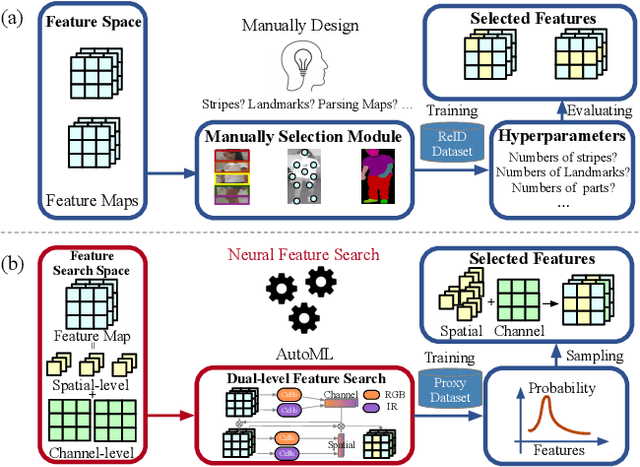Neural Feature Search for RGB-Infrared Person Re-Identification
Paper and Code
Apr 06, 2021



RGB-Infrared person re-identification (RGB-IR ReID) is a challenging cross-modality retrieval problem, which aims at matching the person-of-interest over visible and infrared camera views. Most existing works achieve performance gains through manually-designed feature selection modules, which often require significant domain knowledge and rich experience. In this paper, we study a general paradigm, termed Neural Feature Search (NFS), to automate the process of feature selection. Specifically, NFS combines a dual-level feature search space and a differentiable search strategy to jointly select identity-related cues in coarse-grained channels and fine-grained spatial pixels. This combination allows NFS to adaptively filter background noises and concentrate on informative parts of human bodies in a data-driven manner. Moreover, a cross-modality contrastive optimization scheme further guides NFS to search features that can minimize modality discrepancy whilst maximizing inter-class distance. Extensive experiments on mainstream benchmarks demonstrate that our method outperforms state-of-the-arts, especially achieving better performance on the RegDB dataset with significant improvement of 11.20% and 8.64% in Rank-1 and mAP, respectively.
 Add to Chrome
Add to Chrome Add to Firefox
Add to Firefox Add to Edge
Add to Edge